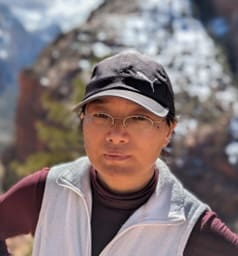
In a recent work published in Physical Review Letters, Postdoctoral Fellow Xiaoying Xu, former Postdoctoral Fellow in the department, Yufan Li, and Jacob L. Hain Professor C.L. Chien have demonstrated superimposed Schrödinger’s live-and-dead cat as half-quantum magnetic flux through a deliberately designed composite superconducting nanoring structure. By doing so, they have identified a long-sought-after novel type of superconductor, expected to become a key building block of fault-tolerant quantum computers, i.e., the spin-triplet superconductor with odd-parity pairing states.
Quantum phenomena are generally reserved for microscopic matters at the atomic scale. One notable exception is superconductivity. The total magnetic flux allowed through a macroscopic-sized superconducting ring is quantized by a fundamental unit of flux quantum. The underlying reason, comprehensively explained by the famous BCS theory, is the pairing of electrons into “Cooper pairs”, in which form they may be collectively described by a single quantum-mechanical wave function.
The internal structure of the Cooper pairs remains a highly active research area today. The BCS theory concerns only the simplest structure, where two electrons form a “spin-singlet” pair and can be described by an isotropic wave function. There may exist more exotic “spin-triplet” pairs, predicted to give rise to various novel physical phenomena including Majorana fermions, which are described by an anisotropic wave function that flips sign when all space coordinates reverse, also known as odd parity. The triplet superconductors are considered very rare and difficult to identify, as the search has been going on for several decades without a single confirmed material.
The recent breakthrough made by Xu et al.1 has successfully observed the fingerprint of spin-triplet superconductivity, the odd parity symmetry, from a candidate material they identified from an earlier work2. They crafted a composite structure of superconducting nanoring in which the opposite ends of the single crystal or epitaxial triplet superconductor are connected by a mundane singlet superconductor. Due to the design geometry, the signature odd-parity symmetry of triplet pairing induces a permanent sign reversal in the superconducting wave function, and alters the fundamental quantization of magnetic flux to half-integer quanta instead of the conventional integer quanta, facilitating an unequivocal proof of the hitherto elusive pairing state. The half-flux composite nanoring they demonstrated is also a new type of qubit, with superimposed “flux up” and “flux down” quantum basis states, without applying any magnetic field. Future quantum computers may find such composite ring structure as their fundamental building blocks.
The research was funded in part by the U.S. Department of Energy.